For 2023, Harley drops more brawn and bling into its hugely popular Breakout
Once upon a time in a galaxy not far away, choppers ruled the world. Shows such as American Chopper attested to the popularity of the raked-out cruiser look. These days, choppers aren’t as popular and the Frankenstein examples of the first decade of the 21st century are thankfully now well behind us. But there’s certainly no denying there’s something cool about the classic lines of a stripped-backed, raked-out cruiser such as the bikes ridden by Peter Fonda and Dennis Hopper in the classic 1969 flick Easy Rider.
For many of us motorcycling types, the chopper became a symbol of rebellion – a mechanical up-yours to society. And for some, the Breakout still represents rebellion and perhaps makes people a feel a bit tough and free while riding their machine.
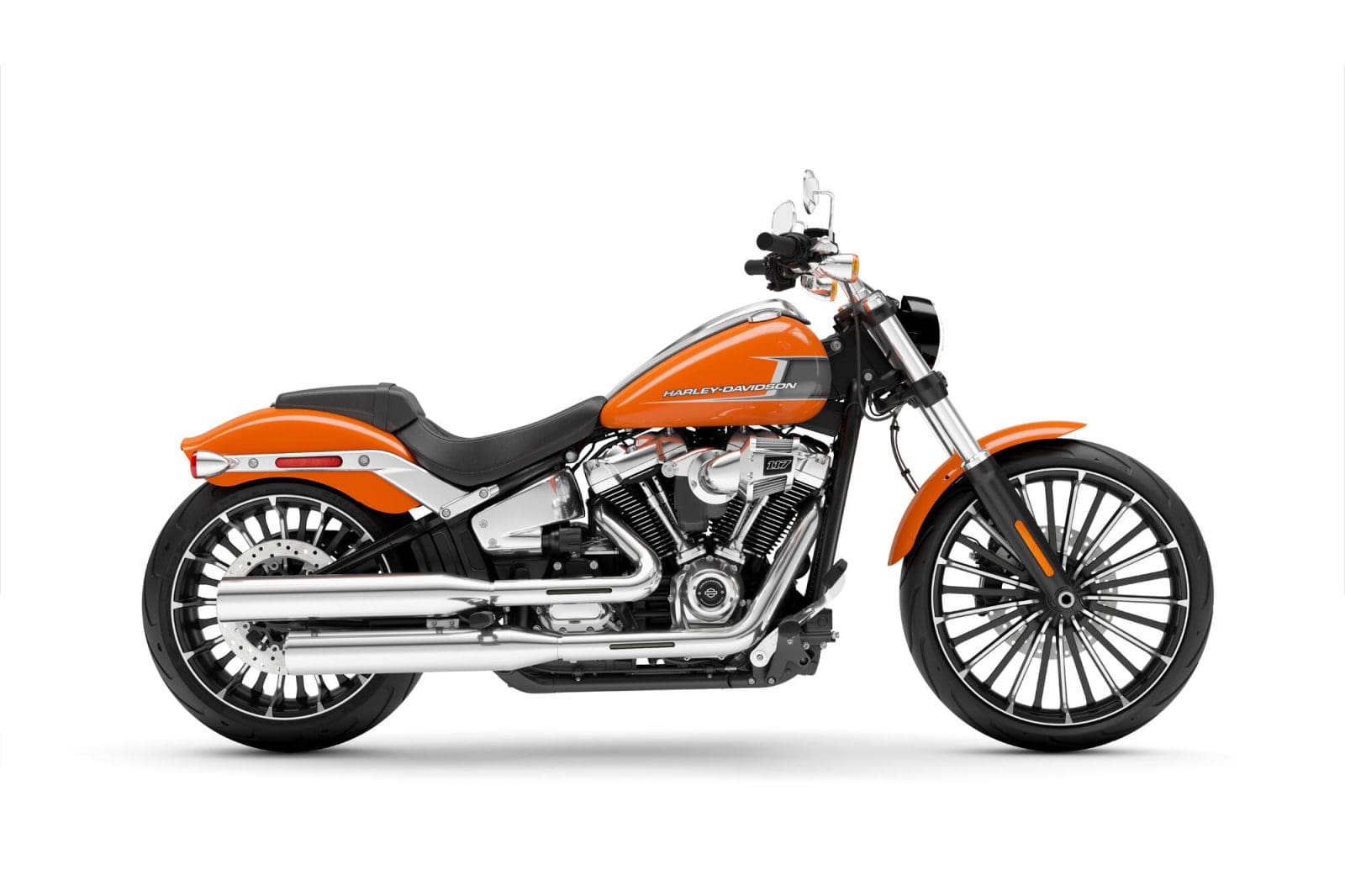
Despite the popular chopper culture fading, Harley released the Breakout in 2013 and stuck with the idea of a stripped-back, no-frills chopper, shunning the over-the-top look of the Orange County brigade.
The original breakout looked the part with its neo-classical lines and huge 240-section rear tyre – but the massive hoop and raked-out geometry meant that its looks were far superior to its handling capabilities.
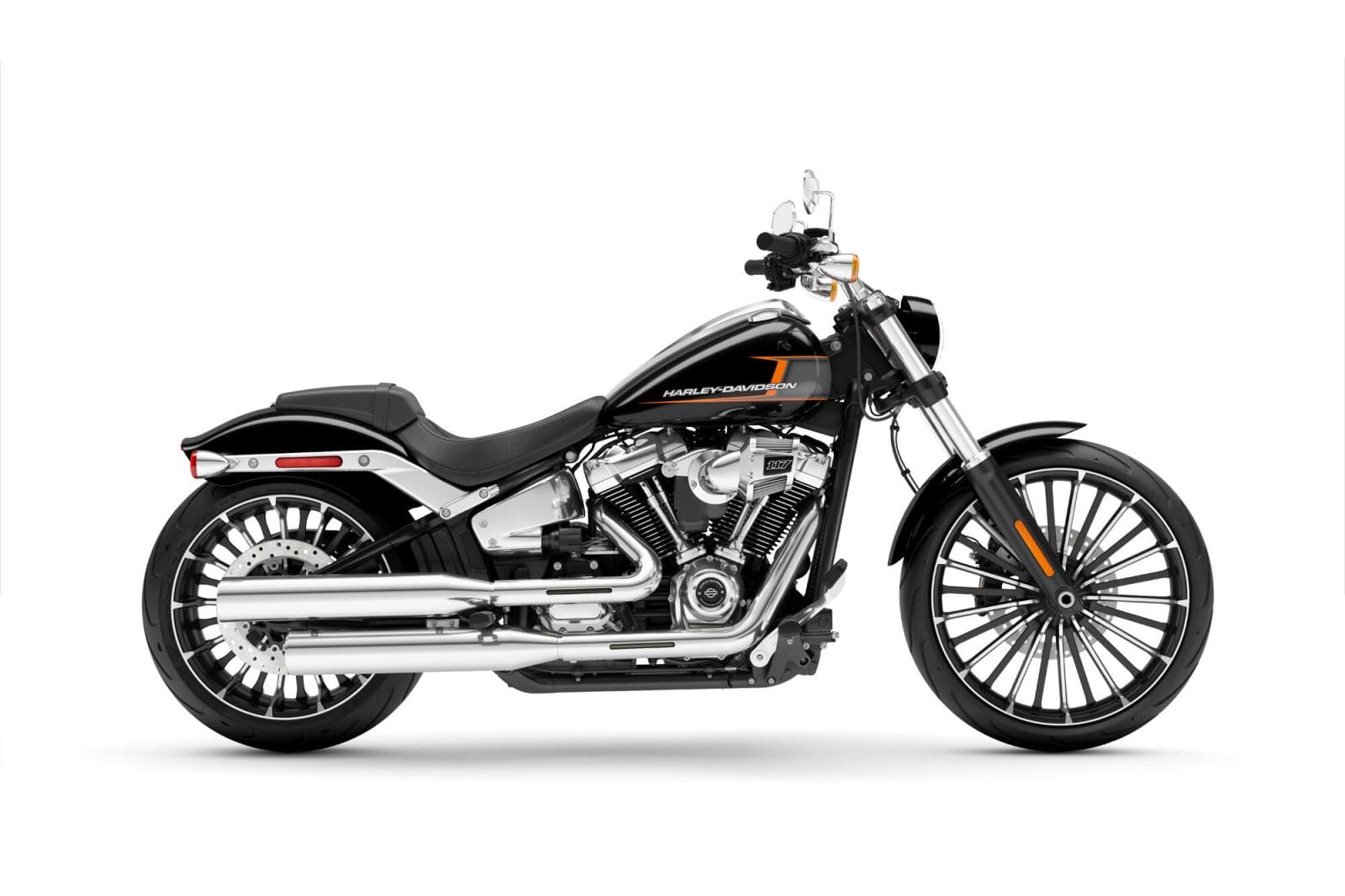
In 2018 the Breakout was released with Harley’s new Softail frame, the rake came in by a degree and the trail was reduced. The new Softail frame was markedly better in every way and the Breakout became a far better handler and an overall more complete package.
It has since become clear that Harley, at least in Australia, has kicked a major goal with the Breakout. And although it’s still somewhat compromised in the handling department, it is by far the highest-selling Harley in Australia and has topped the big-capacity roadbike sales charts for the last few years.
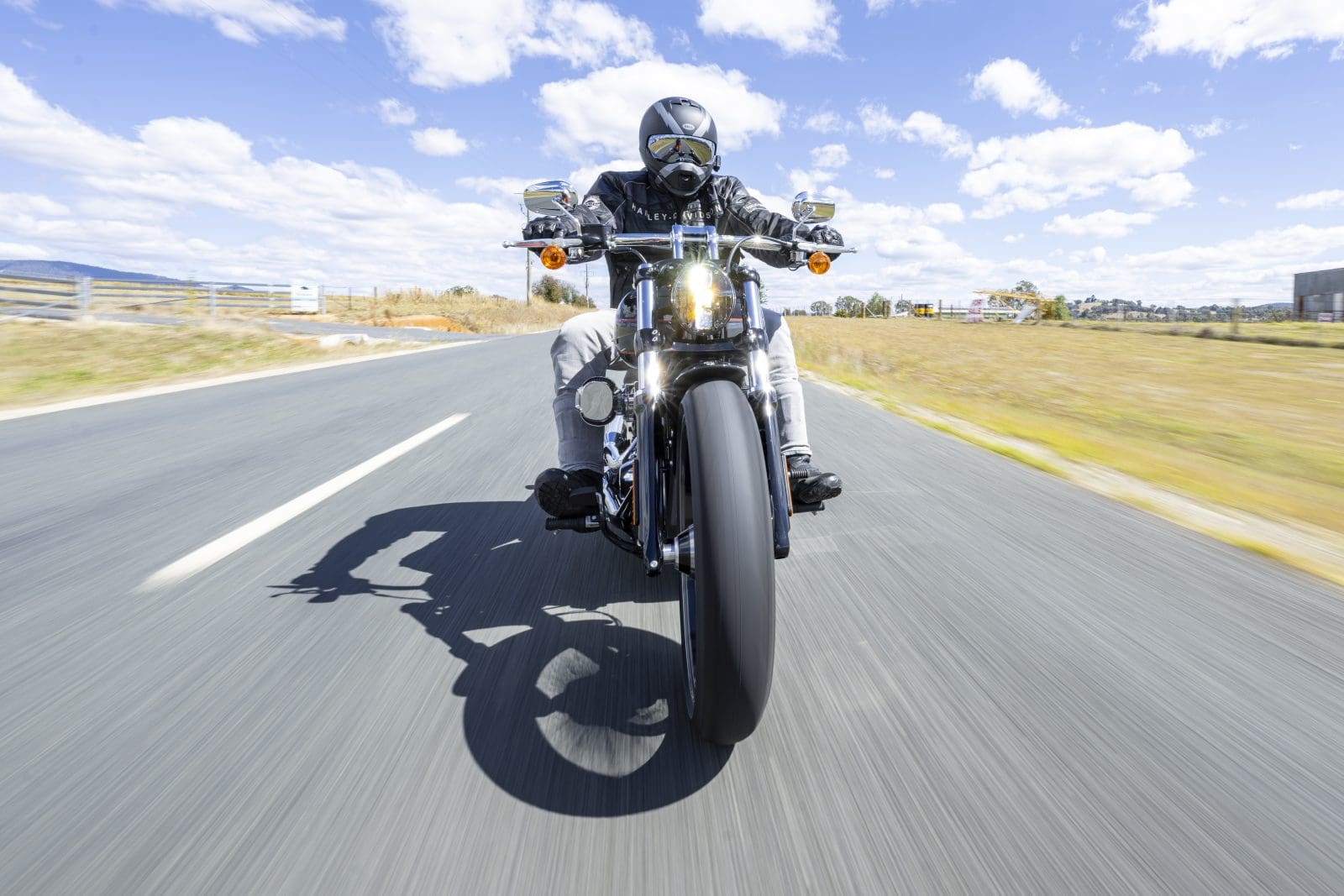
For 2023, Harley has made a few more significant changes to make it even better at what it does best – presence through superior firepower and tough looks. As well as gaining some extra cubes, there’s a return to a classic chrome look rather than the blacked motif of the last few years; the fuel payload has increased by nearly six litres (13.2L to 18.9L) which accounts for the majority of the 5.7kg weight increase; and, of course, there’s a new deck of colours, a new set of rims, new handlebars and risers, and a new seat.
But let’s get down to the biggest and most important update: taking away the choice of the 107 or 114 cubic-inch Milwaukee-Eight, and deciding that the M8 117ci engine is what you’ll have. Until last year, the 117 was only available in CVO models until H-D slammed the bigger mill into the Low Rider S and Low Rider ST. This year the 1923cc V-twin powerplant finds its way into the Breakout, and the bike is all the better for it.
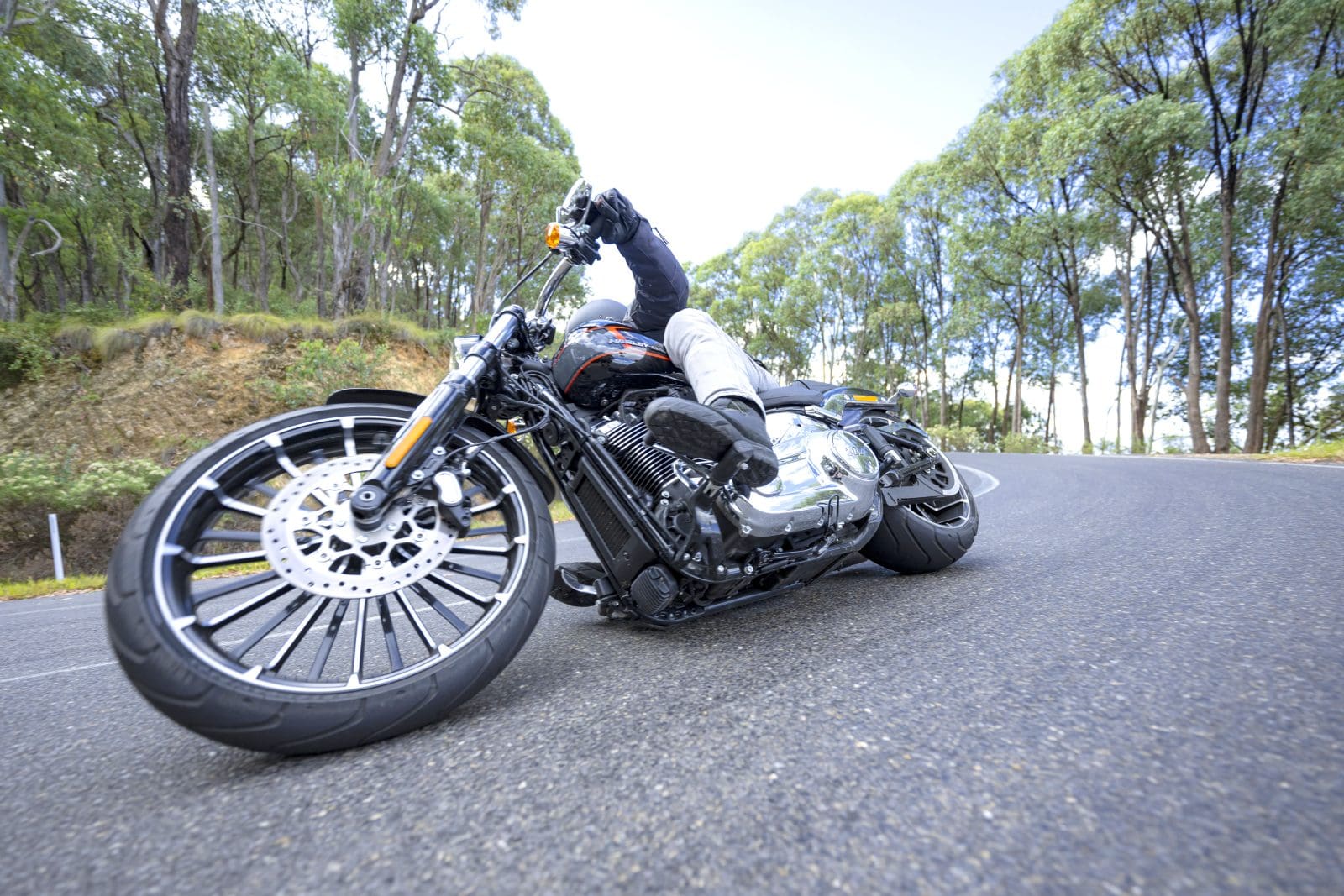
It’s H-Ds best engine yet, and anyone who tells you the 107 or 114ci versions of the M8 are ample should be regarded with contempt – bigger is always better when it comes to cruiser donks. The four-valve, pushrod-operated, air-cooled 117ci engine produces 75kW (101hp) at 4750rpm, a jump of 5kW over the 114. But importantly, it churns out 167Nm of torque at 3500rpm, which is a healthy increase of 12Nm.
The two 961.5cc barrels are fed air and fuel by a Delphi EFI system with air being sucked through a heavy breather intake. Gases are shot out of a two-into-two exhaust system which, thanks to pesky emission regulations, sounds like a tinny fart, which is why most owners replace them fairly quickly. And the mumbo is sent to the fat rear tyre via Harley’s six-speed gearbox with belt final drive.

The engine upgrade might only represent a 55cc increase but there’s a noticeable difference once you hit the street – and my burnout testing method confirms this. Getting the 114 Breakout to light up the rear tyre was almost impossible, but with the increase in torque the new Breakout has the punch to get the rear spinning.
The torque also means powering out of corners is done with more authority, and overtaking is a breeze. As you’d expect from a 1923cc engine, there’s no shortage of power or torque and the Breakout’s donk spins up pretty fast for what’s supposed to be a ‘lazy’ twin.
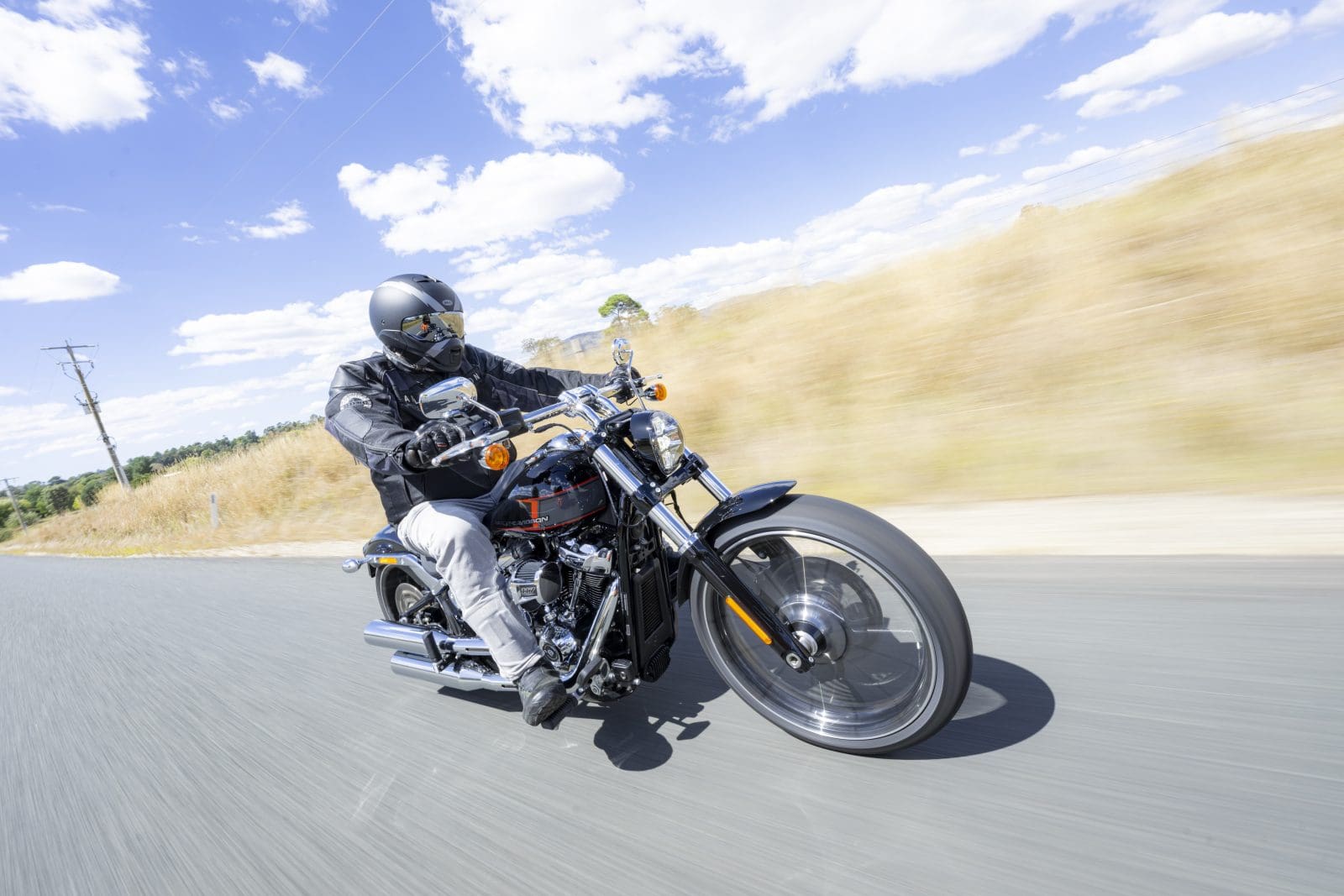
My ride on the Breakout was through the windy asphalt ribbons around Bright in Victoria. I covered some beautiful biking roads full of tight and twisty up and downhill sections, as well as flowing country roads where I could let the Breakout have a proper gallop. It’s the type of riding you’d associate more with a sports-tourer than a city cruiser, but the Breakout rose to the challenge better than I thought it would.
The seat and the seating position was surprisingly comfortable and the suspension pretty bloody good – both of which will allow riders to take advantage of the larger 18.9L tank and tick off a few more miles before a servo rest. I loved the look of recent Breakouts, and I wasn’t sure a bigger tank was even needed, let alone wondering whether it would ruin the look of the bike. But to be honest, I reckon the bigger tank looks better, giving the Breakout a stockier look around the front-end – a bit of a bulldog sort of stance, if you like.

As to whether you need more fuel on a bike suited mainly to city work is debatable, but as it doesn’t detract from the bike’s looks I reckon it’s better to have it and not need it rather than need it and be stuck on the side of the road.
Also adding to the Breakout’s ability to get out of its comfort zone is the addition of cruise control as standard fitment. It’s the same system found on most Harleys and is a simple push-to-engage system with a toggle switch to increase or decrease the set speed.
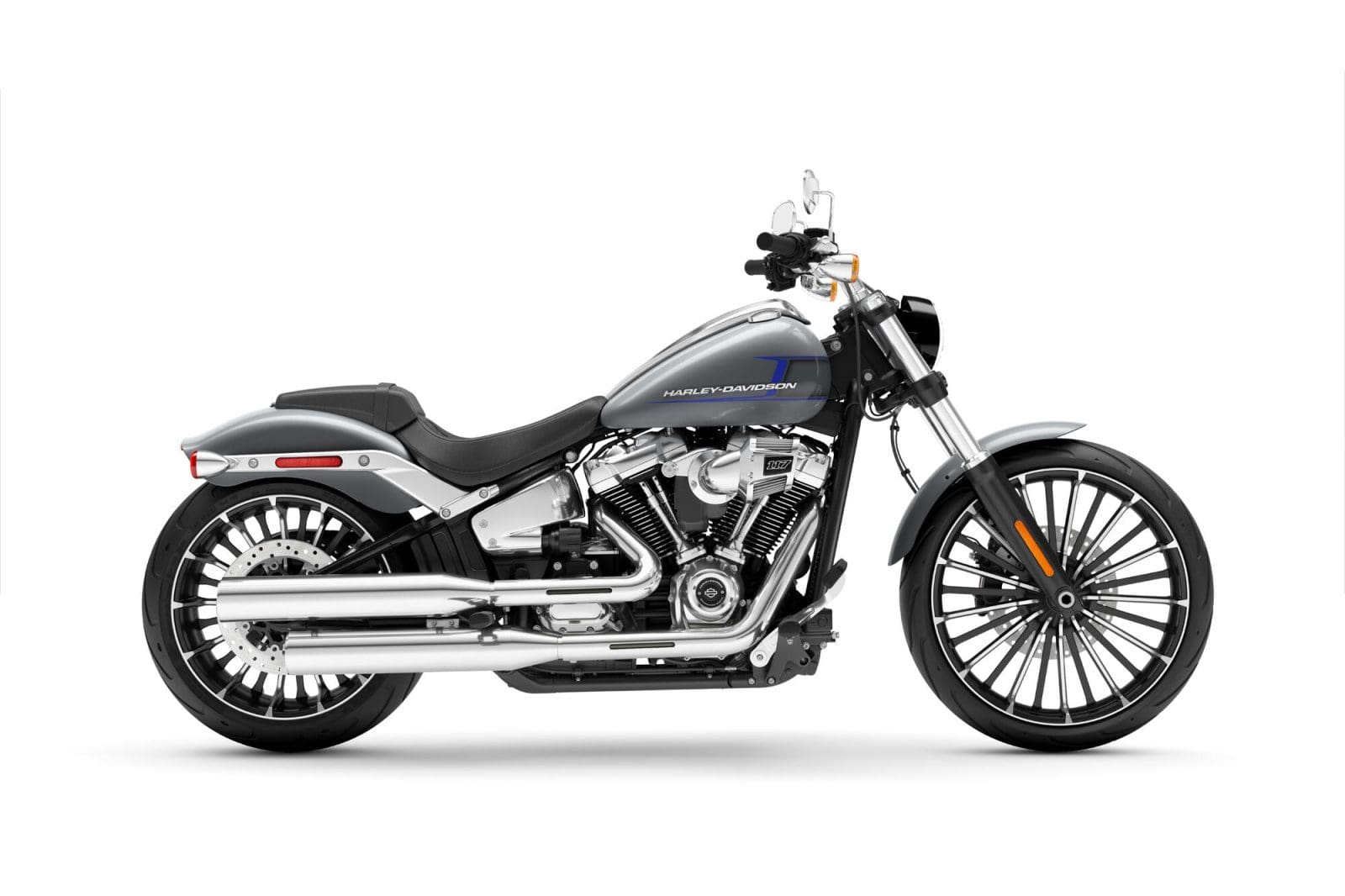
Traction control will be available as an option – but you’re only going to need it if it’s wet or you’re pushing too hard, in which case you probably picked the wrong style of bike. And really, how many Breakouts are going to be ridden in the rain for extended periods?
So apart from colours and higher ’bars that wraps up the changes for the 2023 model. The claimed wet weight has increased from 305kg to 310kg and, as mentioned, most of that is the extra fuel. Sure, 310kg isn’t light, and I wouldn’t like to pick it up, but with the weight held very low and a 665mm seat height it’s easy to push around the shed. The Breakout hides its weight really well once you’re rolling and it doesn’t feel cumbersome or unmanageable at all. It’s a very well-balanced bike and picking your way through traffic or ripping off slow-speed turns is child’s play.

The Breakout rides on Showa suspension with a non-adjustable 49mm dual-bending valve fork up front and preload adjustable monoshock on the rear. The rear suspension is remarkable – not because it’s some sort of brilliant, but in that it works at all. Because while the front coughs up a decent 130mm of travel, the rear has a puny 86mm of travel – my foot pump has more. But, somehow, it works. Not once did I get slammed in the spine hitting potholes and the ride was comfortable and surprisingly smooth – that’s something you’d have never said about the pre-2018 models.
I travelled the same roads last year on the Road Glide ST and the Breakout was as good as that in terms of ride quality from the rear, so I was well impressed that Harley had managed to get such a small amount of travel to work so effectively. Despite the front suspension’s lack of adjustment, it’s compliant, returns a smooth ride and, unless you’re pushing the envelope, most folk are going to be pretty happy with the end result.

The Breakout runs Michelin Scorcher 11 rubber, but you’re going to run out of ground clearance well before you exceed the abilities of the suspension and tyres – in dry conditions at least. Harley quotes 26.8 degrees of lean angle on either side, which is marginally down from the 2022 model’s 27 degrees.
I forgot my protractor so I’ll cop that, but what I can say is that the Breakout’s ’pegs touch down quite quickly if you’re riding with vim and, pushed further on right-hand turns, you’ll drag the lower of the two staggered mufflers.
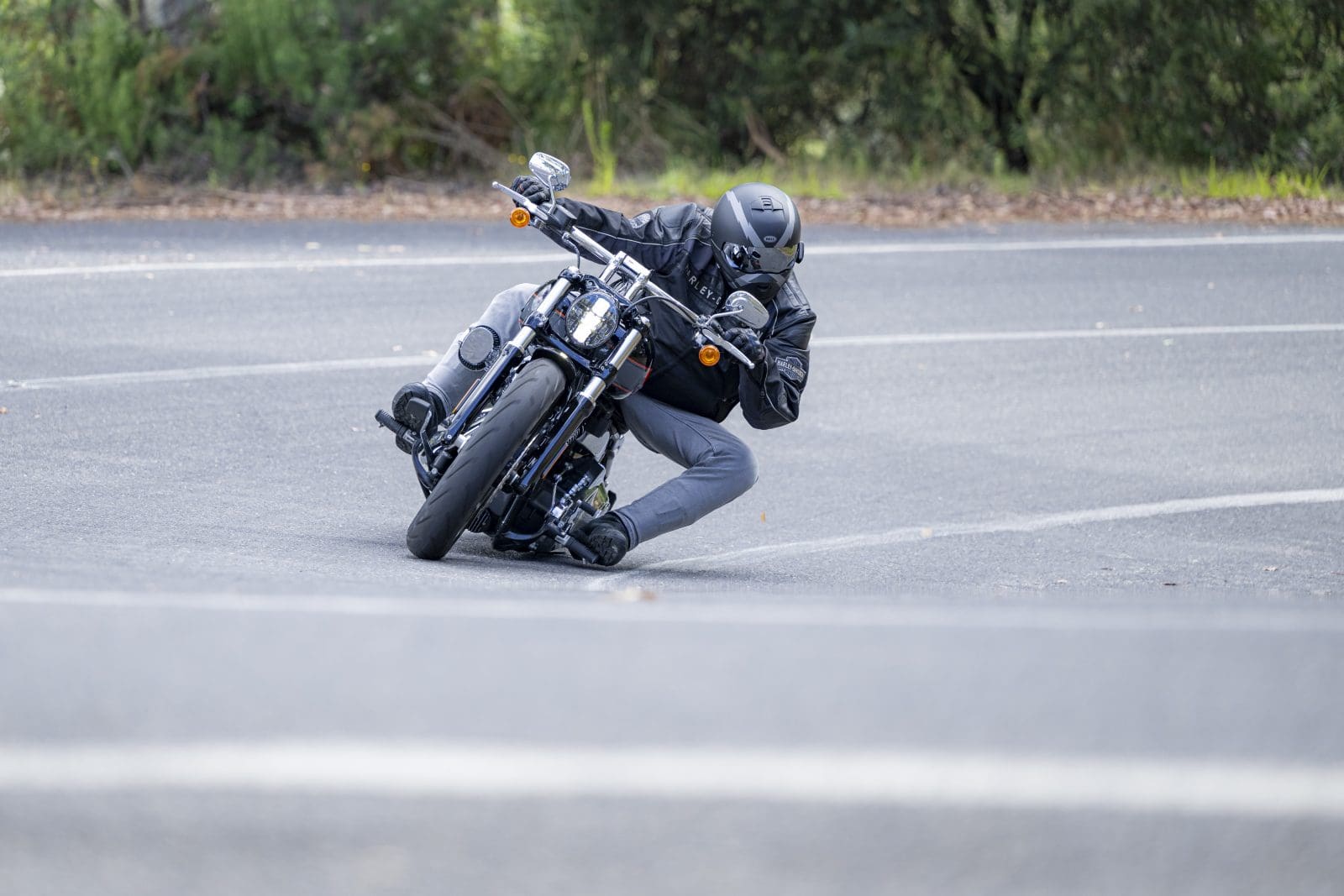
In Harley’s defence it measures these sorts of things with an 81.7kg rider on board, so my 110 kegs had the Breakout sitting low in the water. And I may have been pushing a tad harder than your average rider does.
As on previous models, braking is handled by the same ABS-infused four-piston Brembo caliper on the front biting a solo 300mm disc, matched to a twin-piston caliper with 292mm rear disc. Is it sufficient? Yes. Is it good? The front is good enough, but I’d prefer a twin-disc setup.
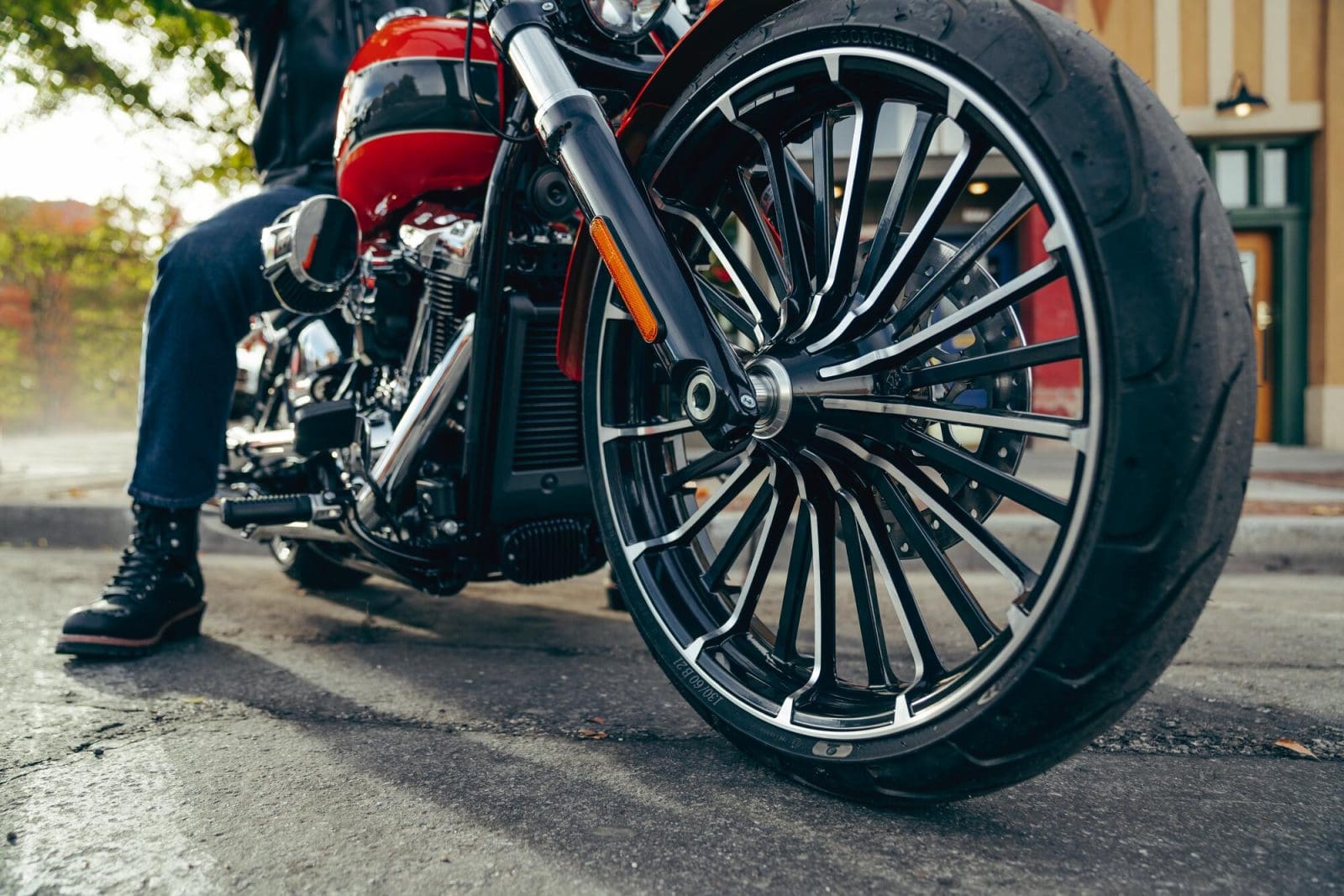
The rear stopper is great as I’ve come to expect from Harley, and it’s especially important with the Breakout because if you want to get the bike around a corner the easiest possible way it’s best to use the rear brake to help pull it around.
The Breakout is adorned with the same 2.14-inch LCD display nestled between the ’bar clamps and it’s way more functional than its size might suggest. It spits out your speed, has a gear-position indicator (that can sometimes forget what gear it’s in), an odometer, fuel gauge, clock, trip meter, range-to-empty and even a tacho.

I’m a fan of the Breakout and have been for many years. I love the chopper look, and I especially like one with a dirty big V-twin in it, which pretty much sums up what the Breakout is all about. Still, there are a few bees in my bonnet. Firstly, at $37,995 it’s expensive. There’s bugger-all electronics to speak of, it’s not fast compared with other machines outside the MoCo’s range, and it will never be admired for its handling.
Also, and I know this is a first-world problem, but there’s an LED headlight and taillight yet incandescent globes remain in the indicators. Really, Harley? For nearly $38k you could have coughed up for LED indicators, especially since they surely must be cheaper to produce these days. Value for money just isn’t there for me, but I guess from Harley-Davidson’s point of view it’s selling bucket loads of the things so why change what is a winning recipe.

Perhaps if I wasn’t a poor motorcycle journalist I’d own a Breakout, but I am so I can’t.
It really is a waste of time talking about ground clearance and handling deficits with the Breakout because that’s simply not what this motorcycle is all about. It’s not a corner carver, although if I rode the original 2013 model in the same way I rode the new one along the same stretch of road, I’d probably just be a stain right now.
It’s also not a tourer although it showed me it can do that pretty well. What the Breakout is is a city poser. A great looking bike, with a big engine and all the road presence you’ll ever need.
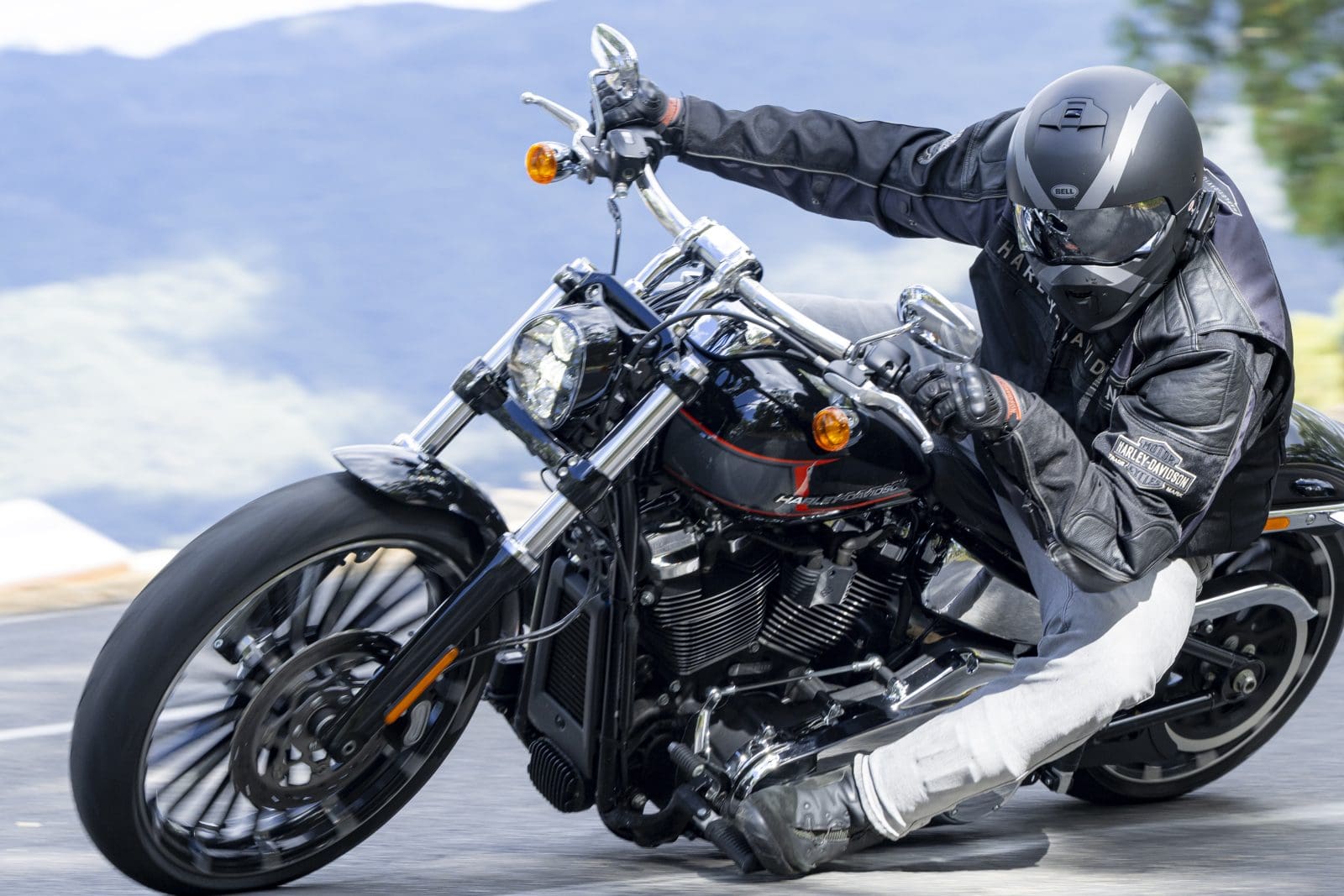
TEST: PETE VORST PHOTOGRAPHY INCITE IMAGES